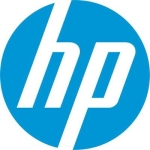What is our primary use case?
We are not using it for our purposes because we are a Palo Alto partner. We propose it for our customers based on their requirements.
We are both a service provider and a reseller.
When the pandemic first began, the use cases were mostly for remote users. We deployed this for the majority of remote users.
What is most valuable?
When the pandemic started, Palo Alto came up with many solutions, which helped with the quick shift from on-premises to the cloud. We have a lot of advantages as a result.
It's a very simple implementation, and I have direct Palo Alto implementation available as well. So it's very simple. We haven't found any issues, so far the implementation is going well, I don't see any gaps.
What needs improvement?
In general, the price could be more competitive.
For how long have I used the solution?
In Palo Alto, we also work with all product lines, including Prisma and other product lines as required. Is a mix, it's a subproduct, we work with the mix of products.
We have been working with Cortex XDR by Palo Alto Networks for two to three years.
We get updates from Palo Alto directly.
What do I think about the stability of the solution?
Cortex XDR by Palo Alto Networks is a stable product.
What do I think about the scalability of the solution?
It's a scalable solution, we have not had any challenges with the scalability of Cortex XDR by Palo Alto Networks.
Our customers range from medium to large enterprise companies. The adoption rate in small businesses is much less, but the majority of our requirements come from mid-to enterprise-sized businesses.
How are customer service and support?
Technical support is the best in class, in my opinion, because they have invested heavily in research and development. In terms of comparison and today's challenges, such as security and layers, Palo Alto complies with all of the challenges.
Which solution did I use previously and why did I switch?
In terms of Security, we are working with a few products and a few brands.
We use Palo Alto and we also work with Barracuda. These solutions are used on the web firewall and for email protection.
We work with the entire Barracuda product line, but specifically for email protection and web filtering.
Barracuda Essentials is included with O365 protections, we work with those solutions.
Palo Alto is part of a different vertical layer than Barracuda. It's distinct. They are very different.
How was the initial setup?
The initial setup depends on the environment, but as a technology, I would say it's simple. It's not that difficult.
The length of time it takes for deployment is determined by the project and the surrounding environment. We can only determine the timeframe based on that, pinpointing a specific time period is difficult.
It does not require maintenance because regular updates and monitoring are required. So if there is anything, new patches and the like, it is done automatically, and there is no additional implementation unless there are any infrastructure changes.
What's my experience with pricing, setup cost, and licensing?
In comparison to other competing products, it is based on the customer's needs and the environment. However, when compared to other products, the price is slightly higher, but when considering technology and new innovation, that is the plus I would say when it comes to being XDR.
The price could be more competitive because it is not on the price wall when you go and question Palo Alto XDR. It is present, but when compared to other competitive products, I would say it is not less expensive; however, when all of the other added values are considered, the price is reasonable.
What other advice do I have?
So far, it has met all of our requirements, and it should be able to cater to a wide range of product lines.
We must first determine what their business requirements are, as well as what other technical layers we are considering, and then propose the appropriate sizing and solution.
We mostly promote Palo Alto, but it depends on the customer's needs, as well as their budget, infrastructure, and what their business requires, all of those factors come into play when recommending a solution.
When you compare it with other products, I would rate Cortex XDR by Palo Alto Networks a nine out of ten.
It's close to being rated a ten out of ten because of their level of support, and the other is the solution and the most recent technology.
Which deployment model are you using for this solution?
Public Cloud
Disclosure: My company has a business relationship with this vendor other than being a customer. Reseller


















